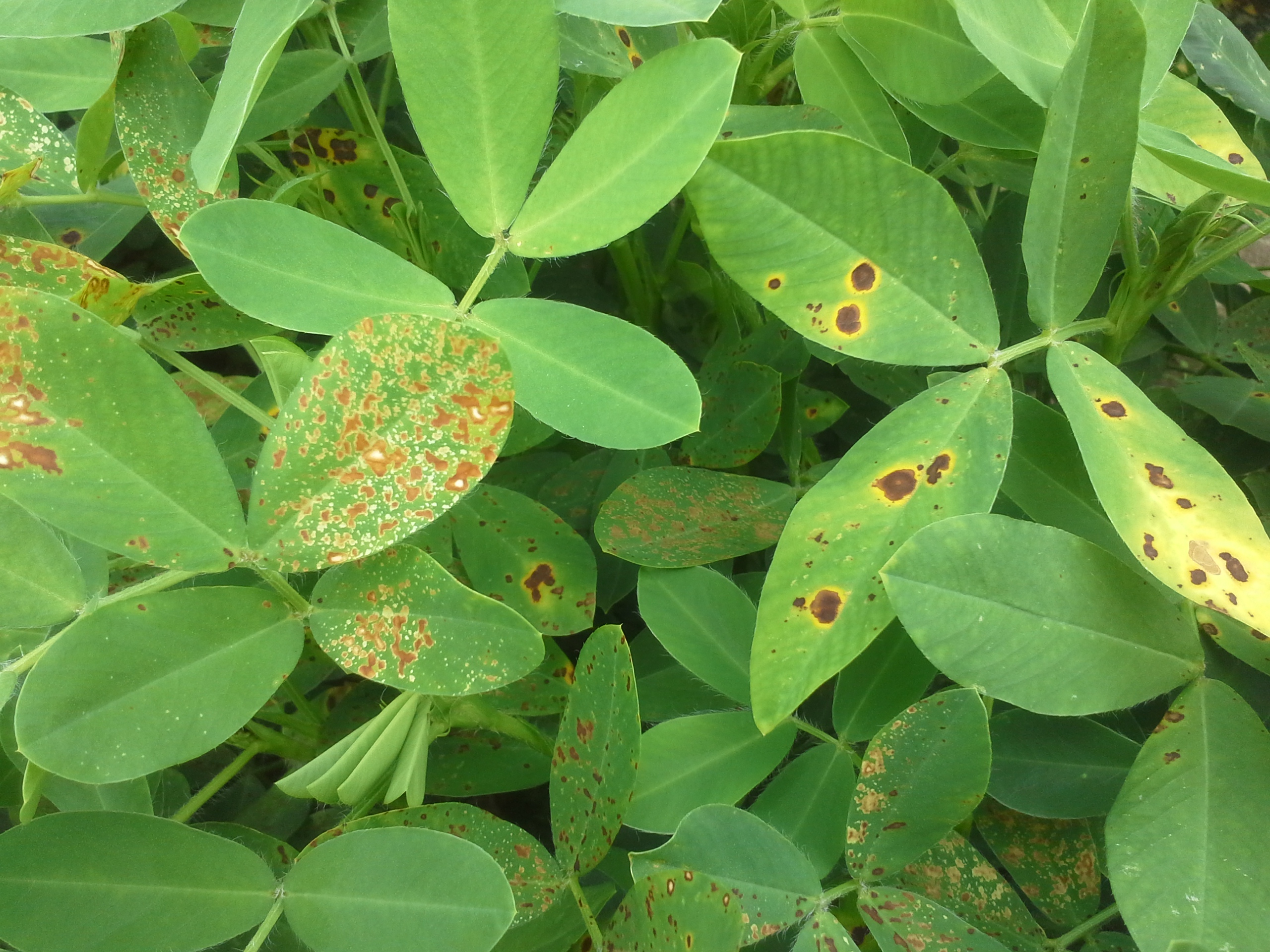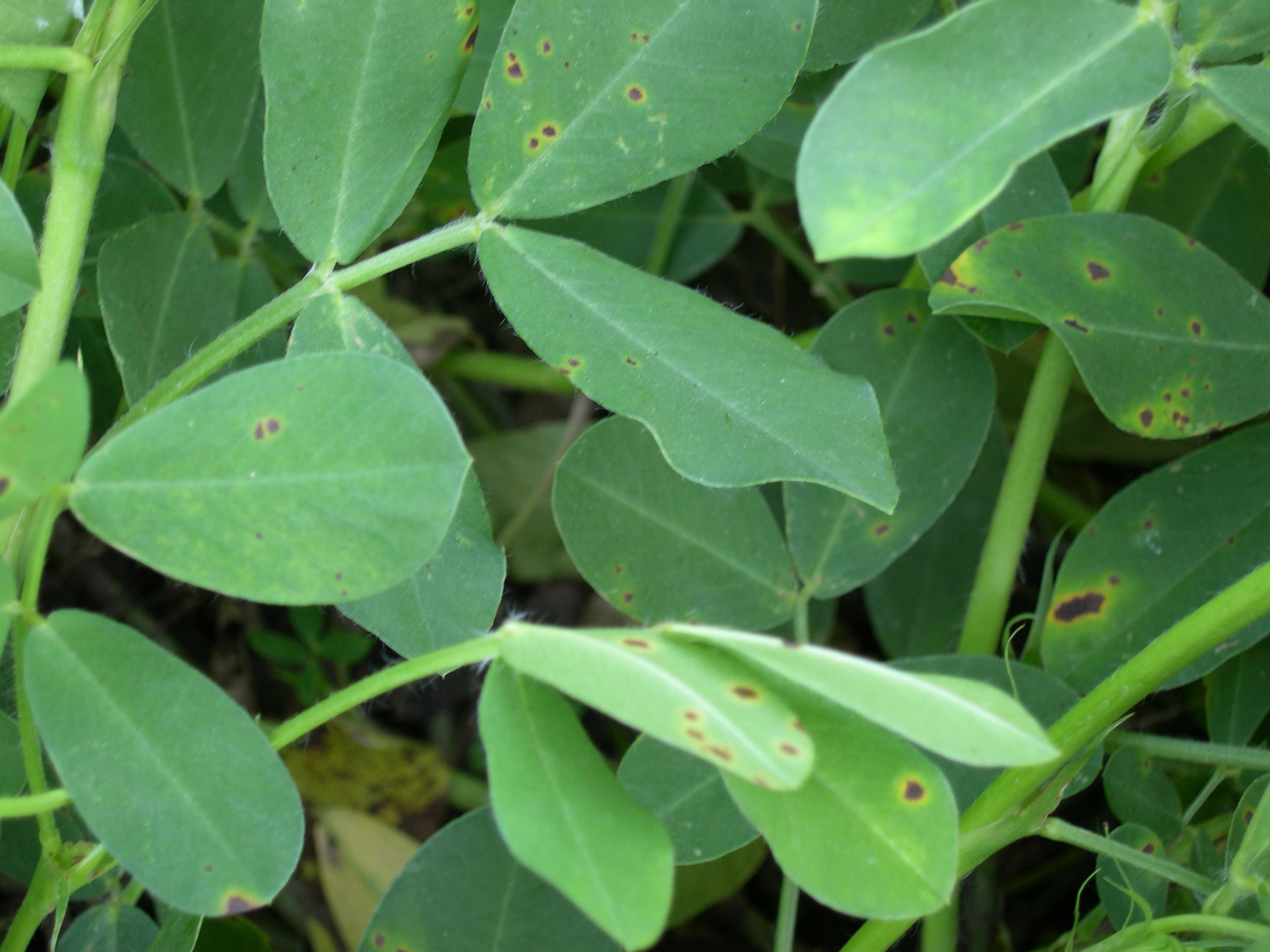Mid-Season Peanut Disease Control and Disease Advisories
go.ncsu.edu/readext?234694
en Español / em Português
El inglés es el idioma de control de esta página. En la medida en que haya algún conflicto entre la traducción al inglés y la traducción, el inglés prevalece.
Al hacer clic en el enlace de traducción se activa un servicio de traducción gratuito para convertir la página al español. Al igual que con cualquier traducción por Internet, la conversión no es sensible al contexto y puede que no traduzca el texto en su significado original. NC State Extension no garantiza la exactitud del texto traducido. Por favor, tenga en cuenta que algunas aplicaciones y/o servicios pueden no funcionar como se espera cuando se traducen.
Português
Inglês é o idioma de controle desta página. Na medida que haja algum conflito entre o texto original em Inglês e a tradução, o Inglês prevalece.
Ao clicar no link de tradução, um serviço gratuito de tradução será ativado para converter a página para o Português. Como em qualquer tradução pela internet, a conversão não é sensivel ao contexto e pode não ocorrer a tradução para o significado orginal. O serviço de Extensão da Carolina do Norte (NC State Extension) não garante a exatidão do texto traduzido. Por favor, observe que algumas funções ou serviços podem não funcionar como esperado após a tradução.
English
English is the controlling language of this page. To the extent there is any conflict between the English text and the translation, English controls.
Clicking on the translation link activates a free translation service to convert the page to Spanish. As with any Internet translation, the conversion is not context-sensitive and may not translate the text to its original meaning. NC State Extension does not guarantee the accuracy of the translated text. Please note that some applications and/or services may not function as expected when translated.
Collapse ▲Many peanut growers had a hard time getting in their fields for the first leaf spot spray, which should have been applied at R3 in early July, or two weeks later on Bailey. After some drier weather, at least one fungicide application has been made and leaf spot appears to be under control for now. We have seen some chemical injuries that mimic leaf spots this year. Large spots that appear suddenly over an entire field are most likely not leaf spots.

Chemical injuries can mimic leaf spots. Spots that appear suddenly and uniformly across the field are not leaf spots. Image courtesy Richard Rhodes, Bertie County Extension.

Early leaf spot starts as small spots that are first found on lower leaves in scattered areas of a field
Most fields are ready for their second or third fungicide application, which are the most critical sprays for control of southern stem rot. Most cultivars will benefit from two applications of a fungicide that controls stem rot, while the more resistant Bailey will benefit from at least one application.
When the next spray is scheduled or advised, consider a leaf spot fungicide that will also control southern stem rot, for example Abound, Fontelis, Headline, or Provost. Convoy and tebuconazole are also effective against stem rot but must be mixed with a fungicide that controls leaf spots. If you are using Convoy or tebuconazole, mix with 1 pint of Bravo (or generic chlorothalonil) or 6-9 oz of Headline. Remember that only two applications of a group 11 fungicide (Headline, Abound, or Evito) should be made per season.
Peanuts in a few locations are showing some water stress. In general, wilting from water stress is a good indication that conditions are not favorable for leaf spot. Applying a leaf spot fungicide in dry weather is unnecessary and can increase the risk or severity of spider mite outbreaks. Delay fungicide applications until leaf spot advisories indicate that conditions are again favorable for disease.
Sclerotinia blight was spotted in isolated areas in early July but advisories slowed down later in the month as our weather dried out a bit. However, any infections that went undetected in early July could easily flare up when favorable conditions (cool temperatures with rain, long periods of high humidity or heavy dews) return. Fungicide sprays are most beneficial at the first sign of a disease outbreak. Keep your eye on Sclerotinia advisories but always rely on careful, regular scouting to stay on top of the disease.
See the North Carolina Agricultural Chemicals Manual https://content.ces.ncsu.edu/north-carolina-agricultural-chemicals-manual for all fungicide rates and additional details. Additional photos of peanut diseases can be found here (pdf).


